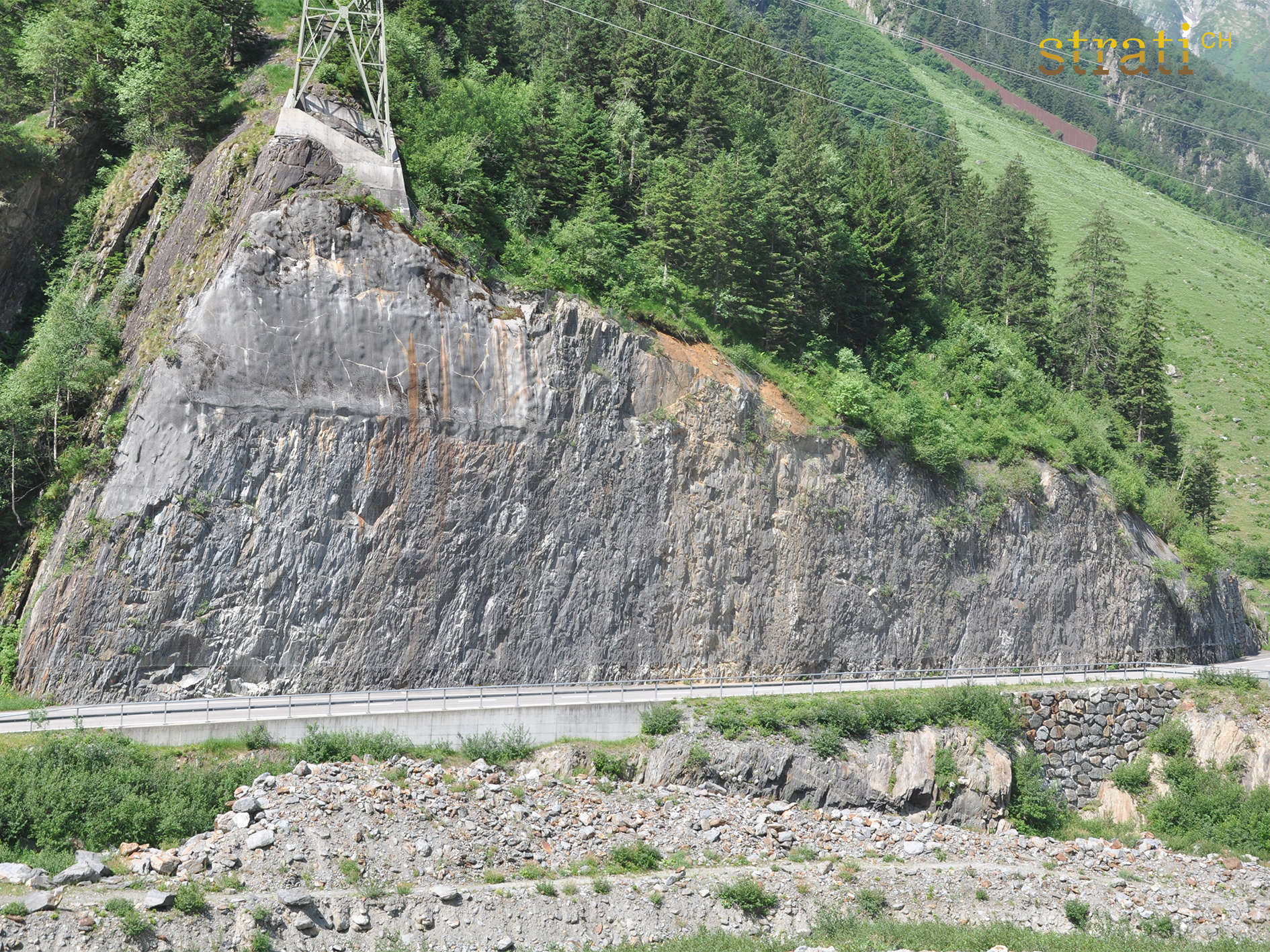Guttannen-Gneiskomplex
Retour à Massif de l'AarReprésentation et statut
- Index
- G-G
- Couleur CMYK
- (0%,16%,16%,2%)
- Couleur RGB
- R: 250 G: 190 B: 175
- Rang
- Formation lithostratigraphique
- Usage
- Ce terme est en usage.
- Status
- terme informel
Nomenclature
- Deutsch
- Guttannen-Gneiskomplex
- Français
- Complexe gneissique de Guttannen
- Italiano
- Complesso gneissico di Guttannen
- English
- Guttannen Gneiss Complex
- Origine du nom
- Variantes historiques
-
Gneiss von Guttannen (Fellenberg & Schmidt 1898), Paragneise der Zone von Guttannen, Guttannen Zone (Abrecht & Schaltegger 1988), Guttannen Gneiss Complex (Berger et al. 2017)
Description
- Description
-
Biotitgneis und Bändergneis, uneinheitlich ausgebildet, oft migmatisch und mit ptygmatischer Verfältelung; aplitische Mobilisate mit dunklen Feldspäten; Biotit-Sericit-Schiefer mit Relikten von Amphibolit und Quarzit.
Âge
- Âge au sommet
-
- Paléozoïque
- Âge à la base
-
- Précambrien
Paléogéographie et tectonique
-
- Socle polycyclique anté-varisque de l'Helvétique
- Paléogéographie
- plaque continentale européenne
- Termes génériques
Références
- Révision
-
(2017) :
Geological Map of the Aar Massif, Tavetsch and Gotthard Nappes. Geological Special Map 1:100'000, Explanatory Notes 129
p.28: The Guttannen Gneiss Complex best represents the typical rock associations of the Ferden-Guttannen Zone. Biotite-chlorite and chlorite-sericite schists dominate in the “Guttannen Zone” of ABRECHT & SCHALTEGGER (1988), called here the Guttannen Gneiss Complex. These greenschist-facies mineral assemblages overprint higher-grade parageneses (e.g., sericite after sillimanite). Towards the southern border of the gneiss complex, the retrograde alteration gradually diminishes and the original migmatitic character appears (ABRECHT 1994).

